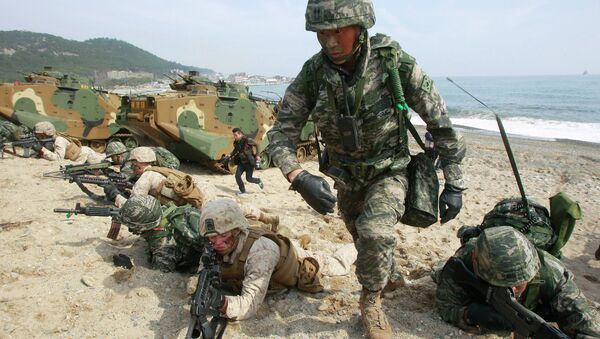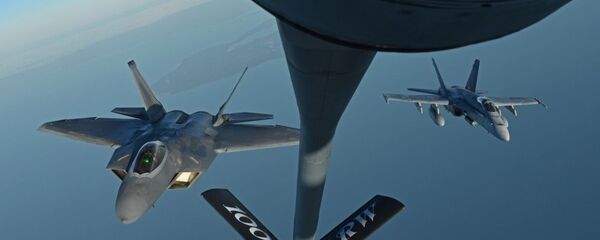South Korea's Ministry of National Defense told the outlet in a brief statement that the "the Air Force is holding the consolidated training of combined flight formations forces to boost combined operations capabilities."
Although details of the exercise are far and few between, sources familiar with the matter did indicate that dozens of warplanes and fighter jets will be participating in the drills. Specific models were not noted.
The Max Thunder drills previously featured more than 1,000 servicemembers from the US Air Force, Navy, Marine Corps and Army, according to the Air Force Times. It's presently unclear how many troops, planes and ships will be involved in the latest drill adaptation.
The drills come months after the US and South Korea announced in March 2019 that they would be replacing their massive springtime military exercises, including the Foal Eagle and Key Resolve series, with others on a much smaller scale. That decision resulted from a combination of factors, including US President Donald Trump's concerns over the cost of drills.
Following Trump and North Korean leader Kim Jong Un's collapsed second summit in Hanoi earlier this year, POTUS told reporters that military drills aren't always essential.
"I was telling the generals, I said, ‘Look, you know, exercising is fun, and it's nice, and they play the war games.' And I'm not saying it's not necessary, because at some levels it is, but at other levels it's not," he said.
Trump followed up those remarks by explaining on Twitter that he wants to end the drills in order to "save hundreds of millions of dollars for the US for which we are not reimbursed."
— Donald J. Trump (@realDonaldTrump) March 3, 2019
At the time, Acting US Secretary of Defense Patrick Shanahan and South Korean Defense Minister Jeong Kyeong Doo indicated in a statement that the move to scale down annual military exercises was agreed upon in a bid to "reduce tension and support our diplomatic efforts to achieve complete denuclearization of the Korean Peninsula in a final, fully verified manner."
CNBC reported in March that the new initiative would focus on "tabletop exercises and simulations, and will involve smaller units such as battalions and companies." Drills will reportedly focus on servicemembers' ability to integrate airstrikes with other systems, including drones and surveillance assets.



